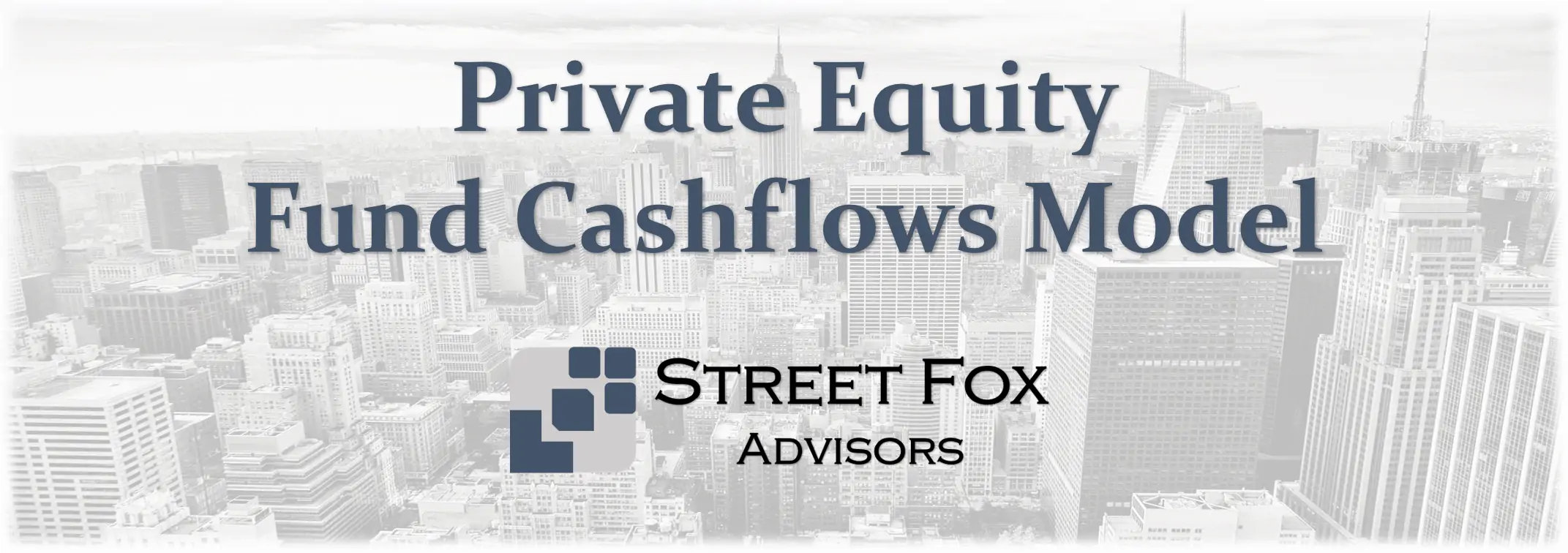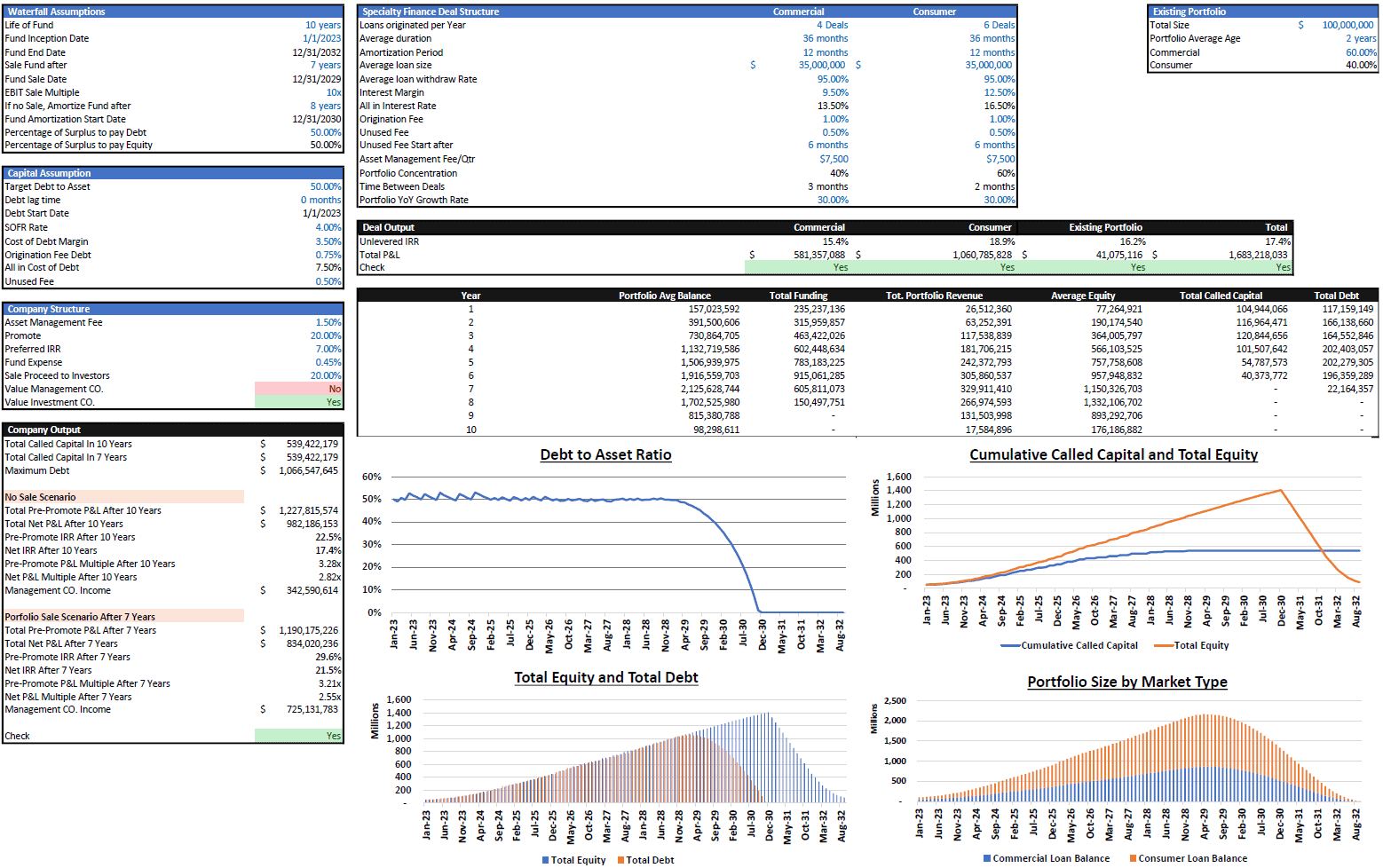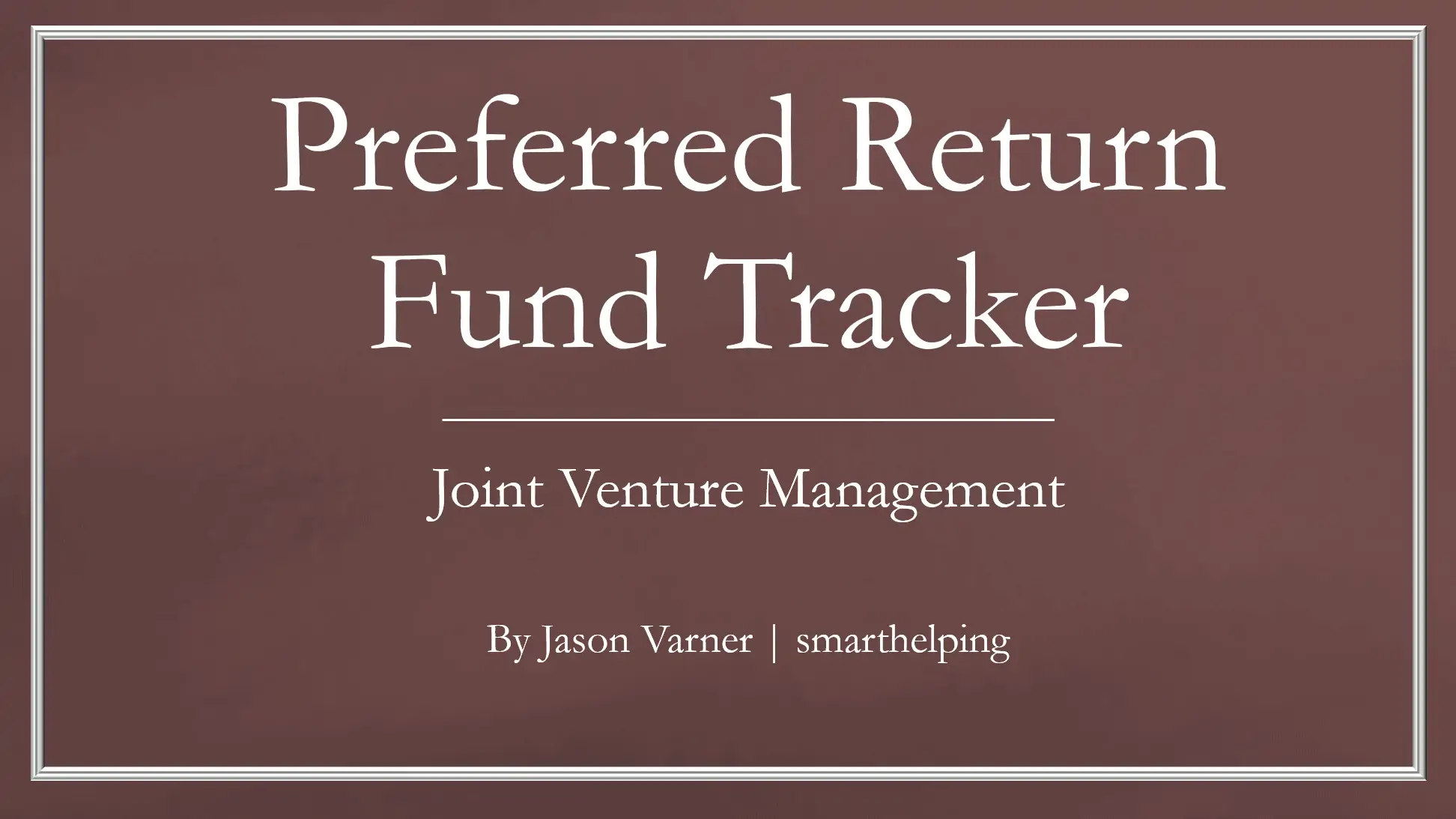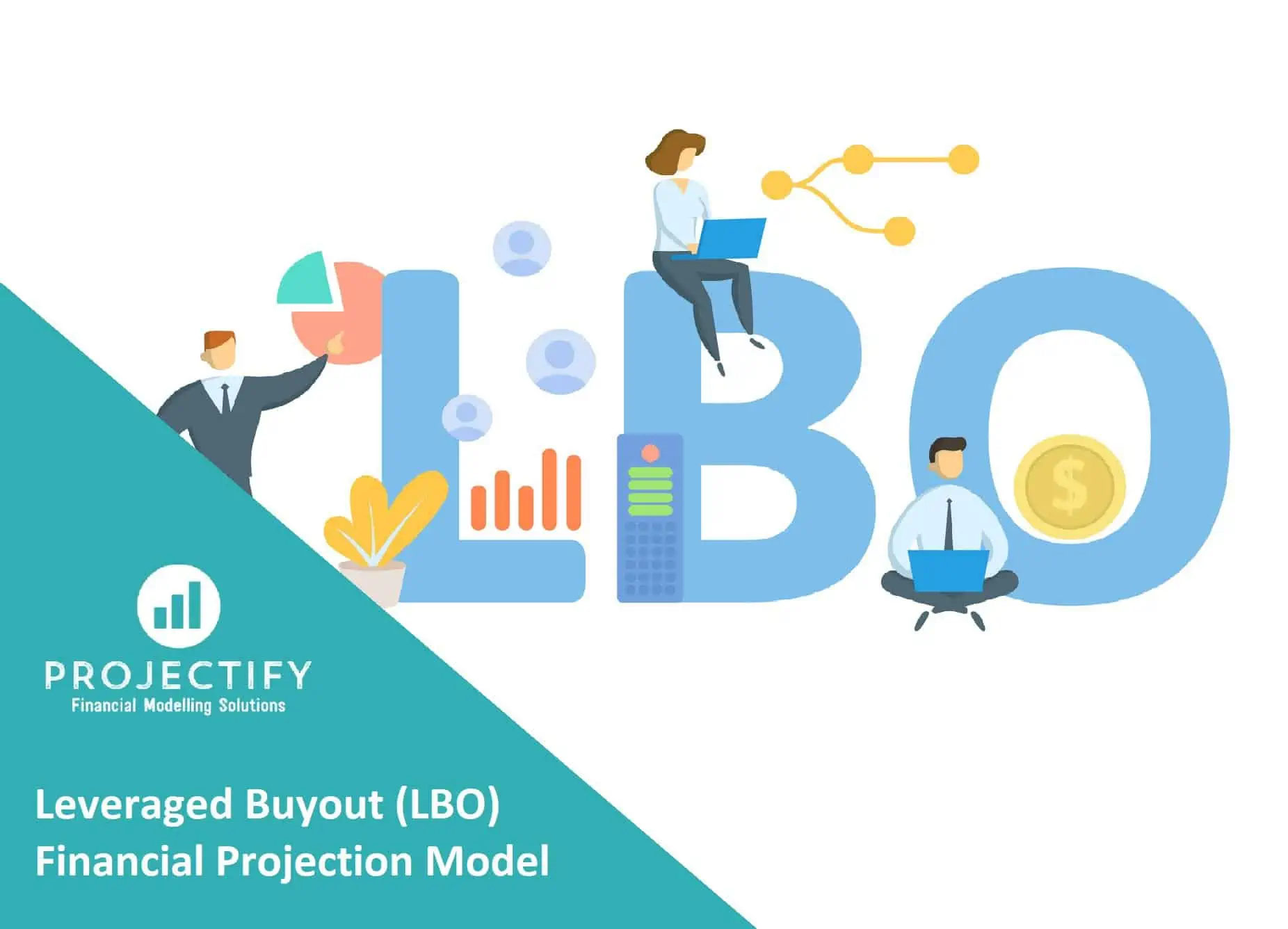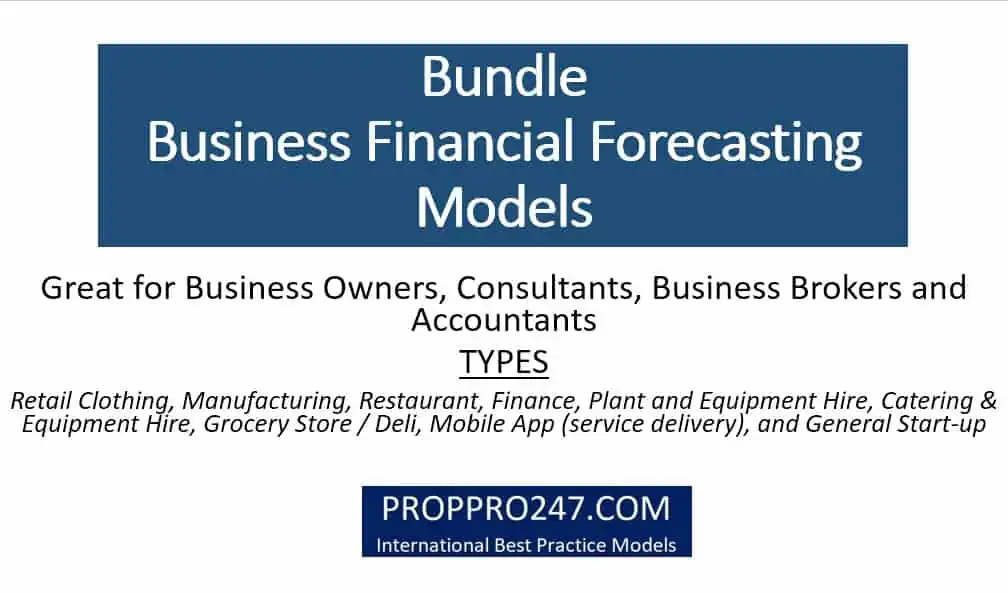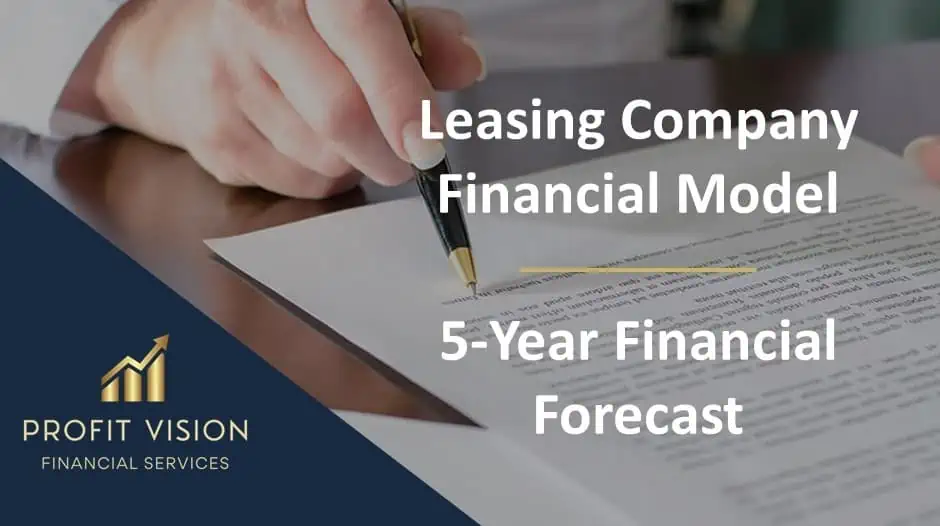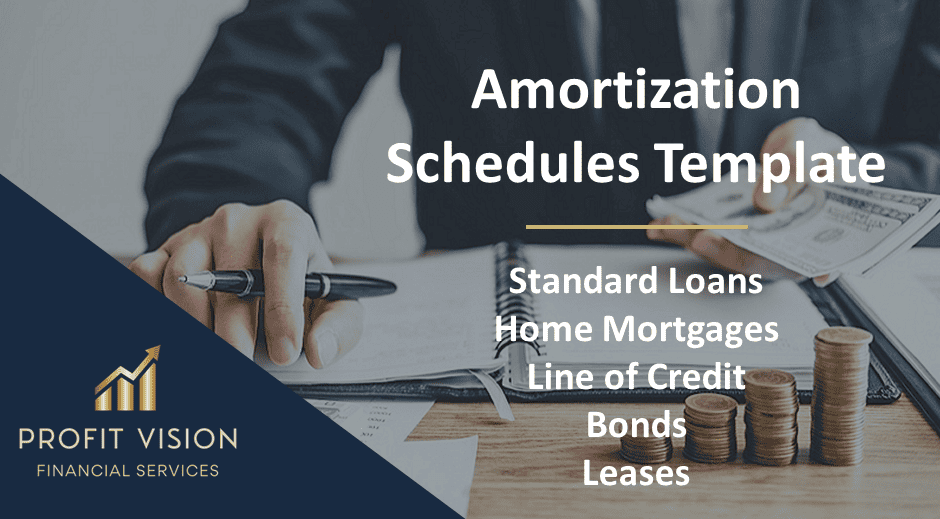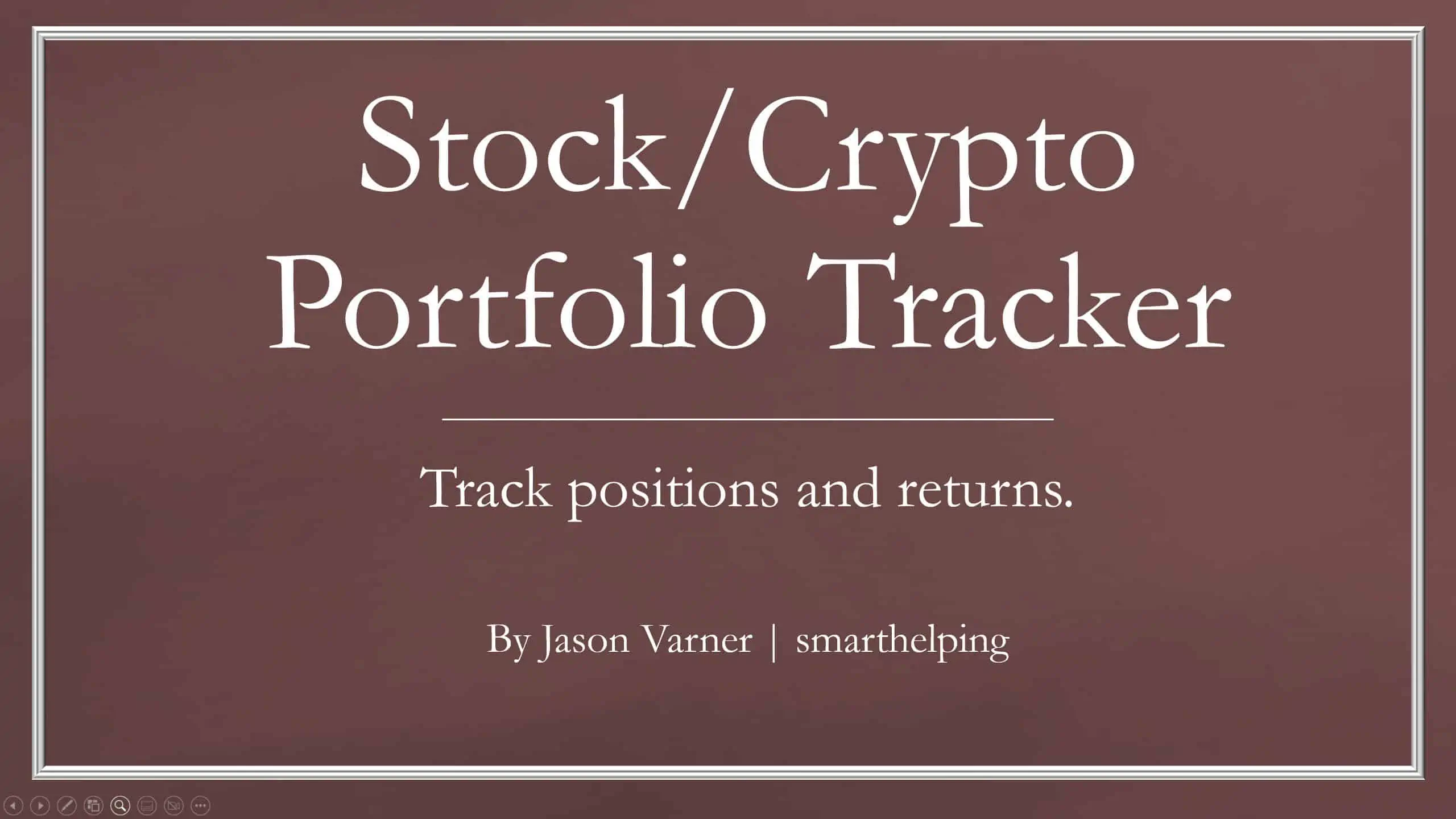Asset Management Company – Closed End Fund Model
Financial Model providing analysis of a Closed-End Fund hosted by an Asset Management Company.

Financial Model presenting a scenario of a Closed-End Fund managed by an Asset Management Company. Closed-End Funds have a fixed maturity and a fixed amount of money to invest. Since Closed-End Funds have a fixed length, investors can invest in the beginning and receive their profits at the end of the fund.
In closed-end funds, there is an interaction between the investors and the AMC. Investors will be paid, and a gain or loss will be generated at the end of the fund (typically 10 years with a maximum extension of 3 years.).
The Asset Management Company (AMC) receives two different kinds of remunerations during the lifetime of the Investment: Management Fees and Carried Interest.
Management fees correspond to the amount of money an AMC receives every year from closed-end funds. The management fee is a fixed percentage of money calculated on the value of the closed-end fund at the beginning of the fund itself.
The second source of remuneration for the AMC is made up of the carried interest, and it is computed only at the end of the closed-end fund’s life cycle. The carried interest is the spread between the final IRR and a hurdle (a.k.a. threshold) IRR multiplied by a fixed percentage. Usually, the fixed percentage ranges between 25-30%; the hurdle rate ranges between 7-8%. This means that, at the end of the fund, the AMC will receive a carried interest only if the final IRR is larger than 7-8%.
This Financial model analyzes a Closed-End Fund and includes assumptions of Fund Life, Total Fund Size, Investment Period, Capital Drawdown, Dividends and Exit Multiple, Debt, Fund Expenses & Fees, Investors Share (LPs and GPs), Hurdle Rate, Carried Interest, and Catchup.
It calculates Fund Cash Flows, including analysis of Portfolio Investments and Returns per Investment, Investors (LPs) and Managers (GPs) Cash Flows and Returns and a Fund Summary presenting the Fund’s key metrics and returns.
Inputs:
• General Business Info & Reporting Metrics
• Fund Terms (Fund Size, Equity & Debt Assumptions, Fund Length, Extension Periods, Investment Periods)
• Fund Fees & Expenses (Set up Expenses, Management Fees, Administrative Expenses, Transaction Fees)
• Investments Assumptions (Capital Drawdown per Year, Dividends, Exit Multiple)
• Investors Assumptions (LPs and GPs Equity Share, Hurdle Rate, Carried Interest, GP Catch Up, After/Before Principal Catch up Calculation)
• LPs Assumptions (equity contribution for 4 different investors)
Outputs:
• Fund Cash Flows, including analysis per Investment, Debt Schedule, Fund Fees & Expenses, Gross & Net Fund Returns (IRR, MOIC, TVPI, DPI), and Portfolio NAV
• Partnership Returns Waterfall analyzing the distribution between LPs and GPs, including calculation of GP Catch up (Before or After Principal) and Carried Interest.
• Investors (LPs) Cash Flows analyzing Contributions, Distributions, Profit, Pre and Post Catchup, and Carry Returns (IRR, MOIC)
• Executive Summary presenting overall Closed-End Fund performance
Help & Support
Committed to high quality and customer satisfaction, all our templates follow best-practice financial modeling principles and are thoughtfully and carefully designed, keeping the user’s needs and comfort in mind.
No matter if you have no experience or are well versed in finance, accounting, and the use of Microsoft Excel, our professional financial models are the right tools to boost your business operations!
If you, however, experience any difficulty while using this template and you are not able to find the appropriate guidance in the provided instructions, please feel free to contact us for assistance.
If you need a template customized for your business requirements, please e-mail us and provide a brief explanation of your specific needs.
Similar Products
Other customers were also interested in...
Private Equity Fund Model (Investor Cashflows)
Private Equity Financial Model to analyze fund cashflows and returns available to Limited Partners (... Read more
Debt Fund Excel Model
Explore the Debt Fund Excel Model, a comprehensive tool for evaluating new credit fund opportunities... Read more
Investment Fund Preferred Return Tracker: Up to 30...
Track preferred returns for investors in a fund with this template. Premium joint venture tracking t... Read more
Investment Holding Company 3 Statement Financial P...
3 statement 5 or 8 year rolling financial projection Excel model for an investment holding company h... Read more
Leveraged Buyout (LBO) Financial Projection Model
User-friendly financial model to project and analyse the financial outcomes (IRR, projected financia... Read more
Bundle – Business Financial Forecasting Mode...
The purpose of this Bundle of Business Forecasting and Financial Models is to assist Business Owners... Read more
Collateralized Mortgage Obligations Model
Collateralized Mortgage Obligations Model presents a simple model where mortgage backed securities a... Read more
Leasing Company Financial Model – 5 Year Forecas...
Financial leasing companies engage in financing the purchase of several types of assets. Though a le... Read more
Amortization Schedules Template (Loans, Mortgages,...
User friendly template including Amortization Schedules for Loans, Mortgages, Operating and Finance ... Read more
Multi-Member Investment Fund Portfolio and Distrib...
A fund management tool to track many positions over time as well as distributions to up to 20 member... Read more
You must log in to submit a review.










